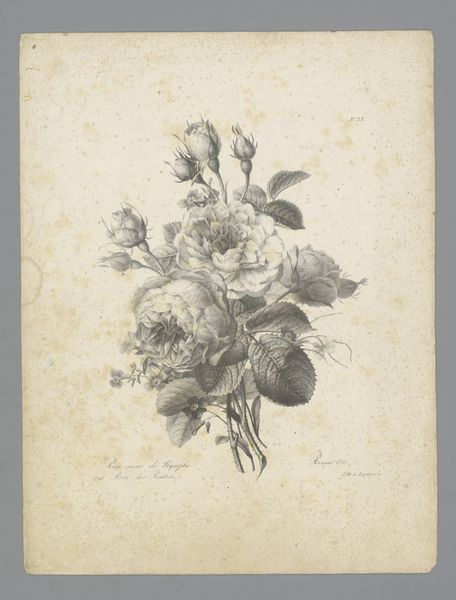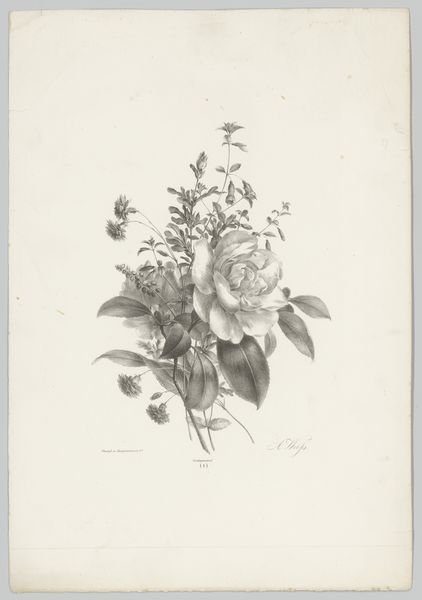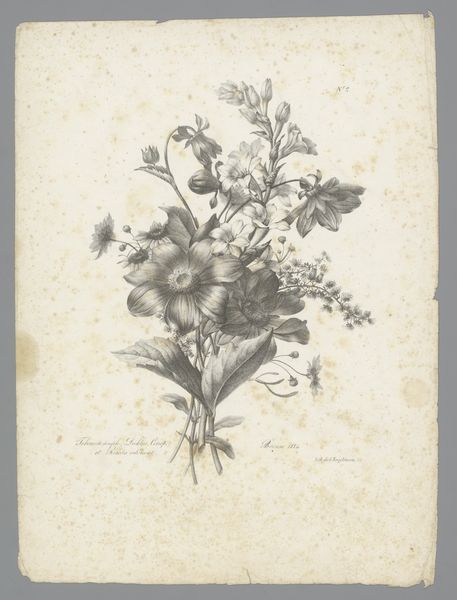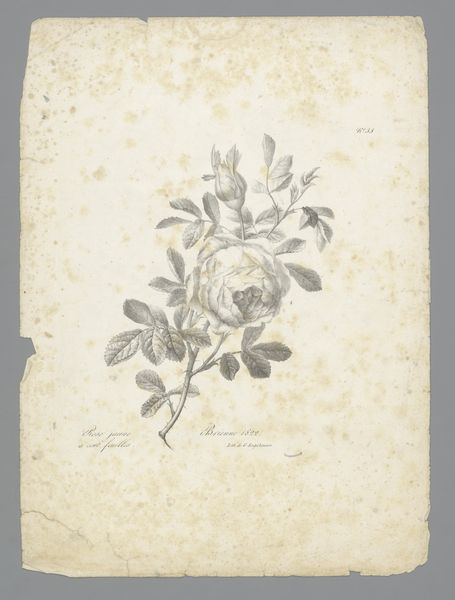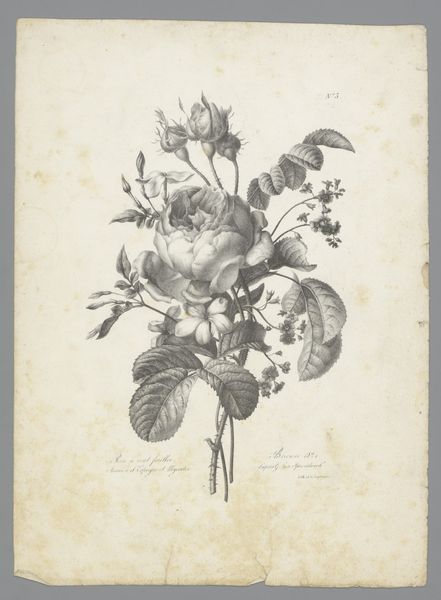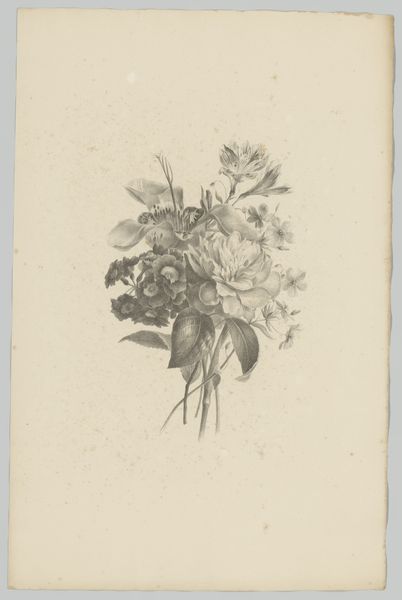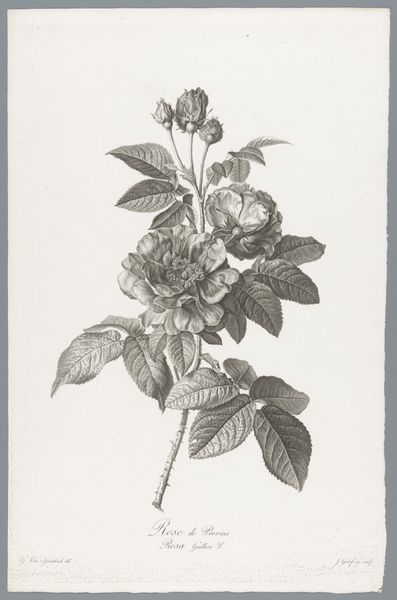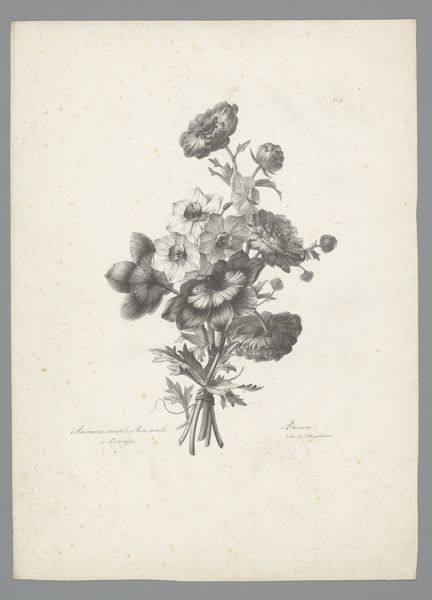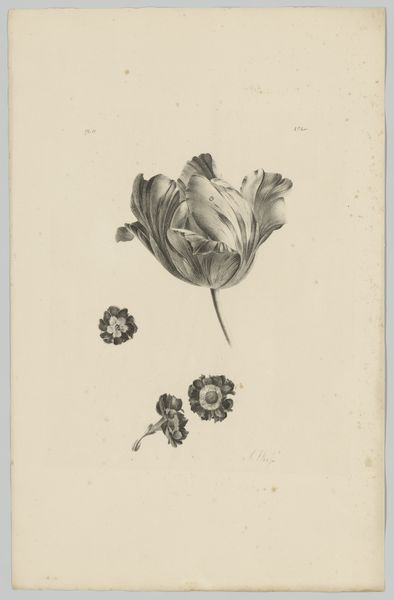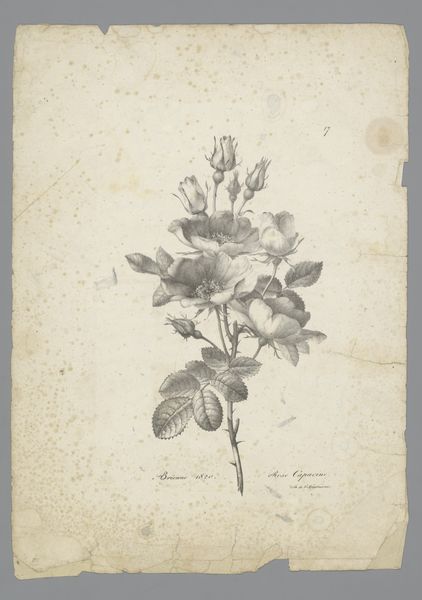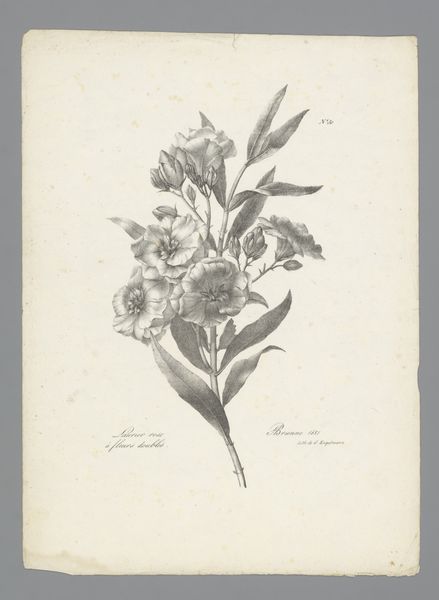
drawing, paper, pencil
#
drawing
#
pencil sketch
#
paper
#
romanticism
#
pencil
Dimensions: height 365 mm, width 270 mm
Copyright: Rijks Museum: Open Domain
Curator: Let’s take a closer look at this pencil drawing from 1823, entitled "Mosroos," crafted by Auguste Piquet de Brienne. It's a wonderfully detailed study of a moss rose, held within the Rijksmuseum’s collection. Editor: My first impression is one of delicate stillness. It feels like a fleeting moment captured in graphite, like a specimen meticulously recorded, but also imbued with a sense of quiet contemplation. Curator: Absolutely. The Romantic period saw a surge in scientific illustration, often reflecting broader interests in the natural world and a drive to classify and understand it. Brienne’s piece slots perfectly within that cultural moment. These drawings served both scientific and aesthetic functions. The practice involved documenting for learning and pleasure. Editor: I see what you mean, and it's also clear the symbolism is key, especially within the historical understanding of flowers. The rose, generally, stands for love and beauty, but what might a moss rose in particular have conveyed in 1823? I imagine that depending on the receiver it could carry a unique meaning or nuance. Curator: Roses, as potent symbols, enjoyed tremendous popularity in the art of the 19th century. In that socio-political and cultural context, their varying forms could come to represent myriad messages from romantic devotion to secret passions, which often were dictated by color, stage of bloom, et cetera. Piquet’s choice to present it so plainly is compelling. Editor: Indeed, there's an interesting tension. The precision leans into scientific objectivity, yet the inherent symbolism of the rose as a vessel for emotion disrupts that purely detached gaze. What also stands out is what's not included: What does it mean that the image of the plant does not represent its stem, for instance? And how might Brienne’s gender impact her interest in what has long been viewed as such a gendered subject? Curator: An important element to highlight. By choosing botanical subjects, female artists entered and somewhat democratized fields that typically prioritized large historical painting, usually reserved for men. This undoubtedly reshaped whose interests were on display within public spaces and exhibitions. Editor: Thinking about it further, "Mosroos" embodies not just a singular bloom, but hints at cycles of growth, decay, and regeneration—ideas about resilience—encoded into seemingly harmless still life depictions of flowers, perhaps reflective of social transitions or the artist's own challenges. Curator: Considering the drawing's historical positioning, the art market that shaped its reception, alongside Brienne's place in it—it reveals some intriguing complexities of gendered artistic expression. Editor: Absolutely. Ultimately, Brienne has gifted us this artwork to spark conversation, urging us to interrogate these complex historical frameworks.
Comments
No comments
Be the first to comment and join the conversation on the ultimate creative platform.
